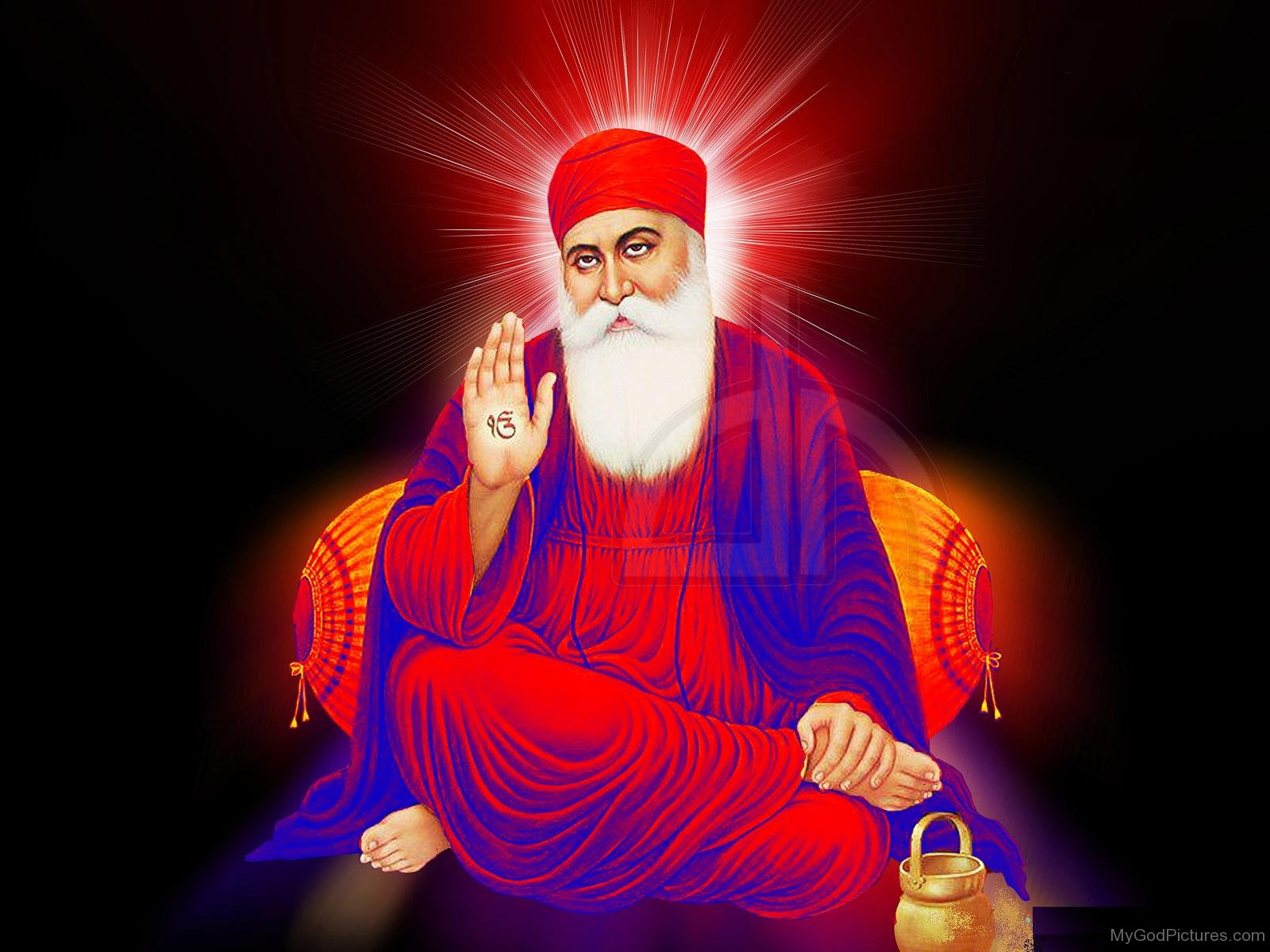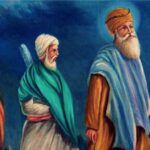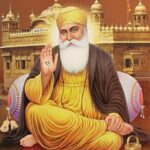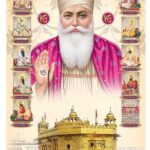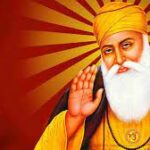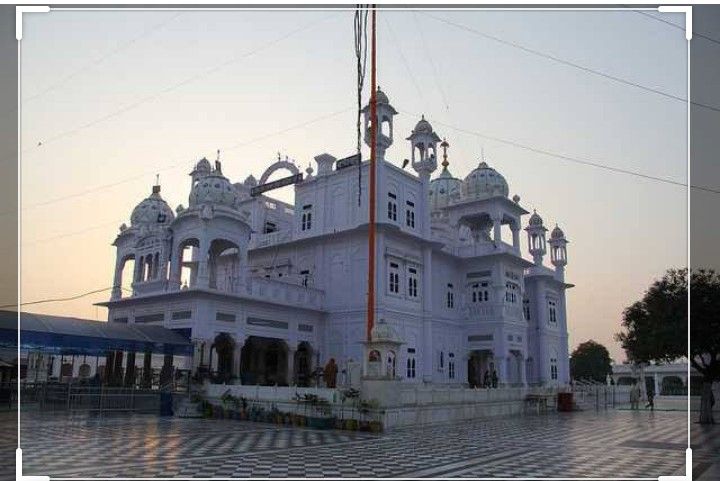Guru Nanak Dev Ji was born in Talwandi zone of Pakistan. Guru Nanak Dev Ji parents were Khatri Hindus. So the nationality was not of Sindh, hence he wasn’t born in a Sindhi family heirarchy. Now, Guru Dev’s parents were Hindus, but Guru Nanak did not wecome Hinduism, or for that reason any usual faith of that time as his religion. He had a unrelated ideology; he straightaway deny to wear the sacred white thread (janeu), when the family priest and his parents asked him to wear that. Guru Nanak Dev Ji cross questioned the priest that what is the importance of this thread, which some individuals can wear and some can’t, women can’t and men can wear? Guru Nanak Dev Ji denied the notion of idol worship, array of Gods, or changing the shape of one’s body for spiritual reasons (cutting of hair, circumcision etc). Guru ji had a unrelated ideology and this led to the emergence of a new spiritual path, which gave birth to Sikhism.
The first Sikh Guru- Guru Nanak Sahib who was born in Talwandi now familiar as Nankaana Sahib (Pakistan). They travelled all crucial destinations of Um divided Indian Reigion and apx all asian countries. As per historical reference accessible they have more than 3 crore followers in thier life time. (Most of them come after their old religion along with new illuminated teachings of Guru Nanak).
If you travelled to remote India you will explore numerous Nanakpanthis. They do not look like sikhs but they do go after teachings of Guru Nanak. Sindhis are widest followers of Guru Nanak. They follow the Guru Nanak’ Bani and maintained their traditional look.
Why Do Sindhis also pray to Waheguru
With the learning of Guru Nanak during one of his visit to Sindh, many Hindu Sindhis take on Sikhism. Many Hindu Sindhi women grasp the Gurmukhī alphabet to qualify them to read the Guru Granth Sahib. Many Amils, a sect of Hindu Sindhis, accepted Sikhism.
There used to be a timeline, before the partition of our nation, when numerous non-Muslim Sindhis were Nanakpanthi/Sehajdhari Sikhs. The relationship of the Sehajdhari Sindhis with Sikhism is fairy tale and legendary one. Like the Sikhs of Punjab, the Sehajdhari Sikhs of Sindh do blanked out their home place and are now scattered all over India and abroad. There are about 3.8 million sindhis in India and about 50 million in Sindh province of Pakistan. Their main pilgrimage centres are Sadh Bela near Sukkur in Sindh and Dehra Sahib and Nankana Sahib in Punjab. Sadh Bela is an Udasi shrine constructed in 1823.
Loyalty, faithfulness to Guru Nanak was and is nearly universal in Sindhi families. Transforming their firstborn son to a Sikh practised to be family tradition among the Sindhis. He was dedicated to Guru Nanak and his conversation were grounded on the teachings of the Guru Granth Sahib.
What are the differences between Punjabis and Sindhis?
Sindhis and Punjabis are never bhi ‘ek hi baat’
Just like Telugus and Tamil are not the equal thing, Punjabis and Sindhis are way too pretty different from each other. The familiar string that they concern is that both are successor of Indo Aryan culture and form a chunk of North Indian ethnic groups.
Sindhis don’t have a quota unlike other outnumbered hub, as they are sometimes missed out in the Thanks posts such as that of Amazon, we are few times mention to as foreign people in our own nation but we still command to stand out amidst the mass. Hail Sindhis!
One more basic difference is that Punjabis are from Punjab( Punjab state in India and Punjab Province in Pakistan combined) and Sindhis arise from Sindh ( land around the Indus River), now in Pakistan.
Likewise there is a pretty much difference in culture, food, dressing, literature and
also scripts
Punjabis are quiet healthy, going towards hefty built side. Their eating manners are rich, taking a lot of dairy production, and numerous of them are non-vegetarians. Mostly eat spiced rice called Briyani and Pulav and straight roasted thick breads Naan. They have made a name of their seasoning internationally. Its ingrdients are onions, garlic ginger and many exotic spices and herbs. Many in Punjab drink alcohol and other soft core drugs mostly due to high cash thing from agriculture. Punjabis functions and weddings are super extravagant.
While Sindhis are fairly, soft community. Most of them dependent on agriculture, but are rented farmers. They are conquered in rural Sindh by chieftans shoted as waderas. They have a pretty less participation in armed forces, central jobs, education and National governance. They have the similar taste buds as their Punjabi brothers, but only some do have that cuisine.
Which religion do Sindhis follow?
Most Sindhis are Muslim people, but before the formation of Pakistan and India some 20% of the Sindhi population was Hindu. In 1947, when the descendant states to British India gained their independence, there was a refugee flow of Hindu Sindhis to India. Sindhi communities in our nation India are focused in Maharashtra and the states of Madhya Pradesh, Delhi, Maharashtra, and Gujarat. At the similar time, numerous Muslims in India run off their homeland and settled down in Sind. Recognized as muhājirs, these immigrants and their successor are culturally quite prominent from the Sindhis.
One more thing, you need to understand what is Sindhi? Is this a caste?
No. Sindhi is not any caste. Actually Sindhi is a socio-ethnic group or clan. During Indus Valley Civilization, individuals belonging near river Indus were denoted as Sindhi.
After Mughal’s conquering, Muslims also settled close to Indus River in prehistoric India, hence Muslims are also denoted Sindhi as Sindhi is not a caste, it is a nationality.
There are numerous Muslims who are Sindhi. But mostly Sindhis are Hindu. There are few Sindhi Sikhs too who practiced to reside near river Indus and roam to India after partition.
Well Sindhis were at first pagans, then the origin of Hinduism took place in the indus valley, and at a slow pace the culture changed and people begin to practice Hinduism. Indus Valley civilization! The earliest name for the river Indus was Sindhu! The people settled around the river came to be denoted as sindhis. The sindhis had fair trade bond with Persians.It’s was the way of life. Pure and Beautiful.
